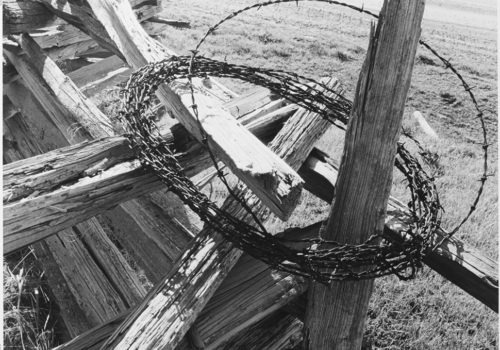The Minor White retrospective curated by Paul Martineau reads like a biography, like a compilation of events and feelings that have left their marks on his photography, an “eccentric and intense” body of work, according to Timothy Potts, director of the J. Paul Getty Museum. When he decided to become a photographer in 1937, Minor White was a young man interested in botany and poetry. He concealed his homosexuality from everyone except his journal.
Photography helped him to, “balance his natural tendency for introspection with his need to be engaged with the world,” he wrote. In 1938, White began teaching photography. He took inspiration from the principles championed by the group f/64, and was hired by the Oregon Art Project, a branch of the Works Progress Administration, and quickly gained international recognition. His photographs were acquired by the MoMA and exhibited at major institutions throughout the United States.
He was interested in poetry and male bodies, for which his photography became the metaphor. He called his first photographs “Equivalents,” each reflecting a complex emotion that tears at it. They blend eroticism and mysticism, as in the title of one of his series of nudes, “The Temptation of St. Anthony is Mirrors.” He later justified this interest in reference to another series: “A love of God can grow out of the flesh.”
Apart from a period when he tried his hand at street photography during the late 1940s in San Francisco—a work which would remain, like many great symphonies, unfinished—White worked mostly with abstraction, using shapes and materials, “to make the invisible world of the spirit visible through photography,” says Martineau, who sees the culmination of this esoteric and essentially visual vocabulary in the series The Sound of One Hand, which can be seen on the cover of the book. Its spiral shape is a nod to the hypnosis methods used by White with his students during his workshops.
Light carves out the lines of the body, often hiding the obvious—the genitals, in his highly erotic male nudes; the contours of the shore in his Point Lobos landscapes—accentuating, through suggestion, the inherent poetry of reality. He surprises the viewer by sowing doubt on the photographed object. Is that water, or the wind stirring up a layer of dust? Metal or wood? Peeling paint or crumpled paper? A cloud or a patch of paint? The reflection of the moon or a stain on a wall? A mountain or a cloud? A wave or a nuclear explosion? Like White’s work, this book is designed to balance biography and emotion.
Starting in the 1970s, the shapes became more clearly anthropomorphic: genitals can be glimpsed in the mountain’s curves, faces appear on street signs and the facades of buildings, eyes peer out here and there; a symbol of eternity that characterizes the work and character of Minor White, as suggested by his friend Barbara Morgan after her final visit with the photographer: “I thought : his body is gone but his soul will never go. Who knows about theories of the afterlife ? But it made me think there maybe life after death. He was very much spiritually alive yet he was nothing but bones. His spirit was so intense.” This idea was used for the title of the book.
BOOK
Minor White: Manifestations of the Spirit
Paul Martineau
Editions Getty Publications
200 pages
9 1/2 x 11 inches
4 color and 160 b/w
illustrations
ISBN 978-1-60606-322-4
hardcover
39,95 dollars
















